Summitting Rinjani
Standing precariously on a ridge of loose volcanic scree, I squeezed the top of the trekking pole and pushed down with all my strength. A thin, broken trail of lights was now snaking its way to the summit roughly 100 metres above my head, a darkened mass that loomed tantalisingly close under the brightness of a full moon. In the distance I could just make out the finish line: two pinnacles forming a natural gateway to the peak.
The ascent took roughly four hours from the closest campsite, and here I was on the final stretch, with less than 30 minutes to go. Feet splayed outward, I took one, two, three steps, then four, until they slid hopelessly down the 45-degree slope, almost to the point where I had started just moments earlier. I closed my eyes, gasping for breath as multiple questions blazed through my mind. What on earth am I doing? I wondered. Why am I even here?
Six weeks before the trip, a friend had regaled me with her own account of the arduous climb up Mt. Rinjani. “It was physically the hardest thing I’ve ever done in my life. The last 300 metres… what can I compare it to?” Her eyes darted around, searching for the right answer. “I know!” she cried. “It’s like walking on marbles.”
Now, as I tackled that same treacherous slope, I realised the truth of her words. Gone were the tables of solid rock that had been my milestones on the lower reaches of the trail. In the beam of my headtorch there existed only the cruel eternity of ash and gravel. And then I felt it – a dull ache coursing slowly through my calves, the telltale sign before they would clench and paralyse in a wave of excruciating pain. “No.” I whispered. “Not now. Not when you’ve come this close!”
Soon the stones littering the ground began to take shape in a faint blue light. I turned my head eastwards and saw the colours of day – warm pink and dusty gold – emerging from a line of clouds on the horizon. My immediate goal was reaching the summit before sunrise, but now there was no time to lose. Battling gravity, the onset of leg cramps, and an almost irresistible desire to give in, I gritted my teeth and pressed on.
* * *
The previous day, Bama and I were perched at our campsite on the crater rim, staring wide-eyed at the forbidding horn rising 3,726m above sea level – tall enough to make it Indonesia’s second-highest volcano. We watched the clouds swirling around its flanks, as the late afternoon sun lit up a web of rain-eroded gullies. “The most important thing is being mentally prepared.” Our guide, Jen, was hinting at the seriousness of our task. Few things, not even the stories of those who had gone before, could prepare us for the challenge that lay ahead.
Our trek had begun over six hours ago, down a backcountry road leading from the village of Sembalun Lawang. The scent of garlic permeated the air as we passed through ripening fields and pastureland. Beyond a stony, dried-up riverbed, a herd of cattle greeted us with a melodious orchestra of clanging cowbells in iron and wood, as though it was a gamelan ensemble. Eventually the trail led into a wide savannah before climbing into stands of pine, lost amid the clouds.
I was curious about the animals that lived on Rinjani. “Deer, wild boar, snakes, many birds,” Jen told us. And monkeys? He waved his arm. “Banyak sekali monyet.” – too many monkeys. It wasn’t long before we had our first brush with the resident long-tailed macaques. At Sembalun POS 2, a rest stop with a concrete bridge spanning a lush canyon, an alpha male, hungry for biscuits, bared his teeth and shook the branches above our heads. Further up the hillside, a larger macaque sat motionless in the middle of the trail, seemingly apathetic to our presence. Fellow trekkers would nickname him the “monkey guardian” of the mountain.
The campsite was cloaked in fog when we arrived, but soon welcome rays of sunlight pierced the fabric lining the inside of our tent. Zipping down the door in keen anticipation, we rushed out for our first view of Rinjani’s sheer walls and the crater lake, Segara Anak, some 600 metres below.
Mount Rinjani is a brooding presence that dominates the northern half of Lombok, an active volcano among more than 120 dotting the islands of Indonesia. Stretching 5,120 kilometres (3,181 miles) along the Pacific Ring of Fire, this is a land of volcanic superlatives.
Tambora, on the neighbouring island of Sumbawa, tore itself apart in 1815 with the largest volcanic eruption in recorded history, resulting in global crop failures, widespread famine and a “Year Without a Summer”. Krakatau, anchored in the Sunda Strait between Java and Sumatra, followed just 68 years later, killing more than 36,000 in the ensuing catastrophe. Heard up to 3,000 miles (4,800 km) away, the volcano’s explosion was the loudest sound ever recorded.
Here too, on the slopes of Rinjani, we could see the raw power of nature and the scars of a violent past. The volcano experienced a cataclysmic eruption in the mid-13th century, creating the caldera we see today. Scientists now believe that Rinjani’s outburst may have triggered the Little Ice Age – matching concentrations of sulphur in ice core samples from that period seem to back up the claims.
The Sasak have no oral or written records of that particular event, but their mountain is steeped in myth and legend. As we stood transfixed on the crater rim, Jen recounted the creation story of Gunung Baru, the newer cinder cone that sits inside the caldera. According to Sasak folklore, it was formed when a djinn (genie) built a house and the mountain exploded. The same djinn constructed his istana – or palace – in an empty crater beyond the summit.
I asked about Dewi Anjani, the mythical queen who is said to live on the mountain. “The Balinese come to Rinjani to give her offerings. They sacrifice animals – chickens – and throw their jewellery into the lake.” Jen’s voice rose in disbelief. “Diamonds!”
Sadly Segara Anak is also home to a less welcome sort of offering. Hoping to dip our painful toes into the cold crater lake, we walked defeated along a rocky shore strewn with rubbish. Through the clear waters I spotted chicken bones, fish spines, and waving shreds of plastic. Cleaning parties come once a month, Jen told us, but a lack of environmental awareness among the local residents may be desecrating their sacred mountain.
* * *
Jen was waiting, sure-footed and patient, as I took the final steps towards the summit, just in time for the sunrise. We joined the throng already gathered on the table-like terrain, where I found a spot and quickly collapsed in a heap.
“Do you want hot chocolate?” I watched in disbelief as Jen reached into his bag and pulled out a thermos of hot water, producing a metal mug and lid before ripping open a sachet of Milo. Warming up on our viewpoint overlooking the still waters of Segara Anak, we waited for the sun’s rays to strike the crater walls and reveal the shadow of Rinjani, stretching out towards the distant horizon. Agung, Bali’s highest mountain, was clearly visible to the west, and down below, the three Gilis lay like tiny stepping stones toward the fabled island.
“Do you want to go down?” Now that the sun had risen, Jen seemed eager to make the two-hour hike back to camp. We stayed perhaps another 10 minutes, before I reluctantly got to my feet for the descent. Coming down, the distances seemed far longer than they were in the dark.
It was on that day that I began to understand a valuable truth: mankind may have the innate desire to “conquer” mountains – to seek out personal glory, or quench a thirst for adventure – but ultimately it is up to the natural world to decide whether or not we succeed.
Just after we reached the campsite from the summit, a thick bank of clouds rolled in, obscuring the upper portions of the mountain. I thought of those who were still fighting their way to the top as we came hurtling down, and I finally realised why Jen had encouraged me to descend as soon as he did. Later on he would tell me how fortunate we were. “Last week it was very windy up there… so many people gave up.” I could scarcely believe the kindness of the weather; wind speeds had dropped to zero on my own summit attempt.
But the day was far from over; still ahead lay at least six more hours of gruelling footwork. Already battered after the summit climb, I winced at the pain in every step, nursing multiple blisters on my left foot and a swollen toe on my right. Three long hours got us down to the crater lake for a lunch break, before picking our way across landslides, fallen pine trees, and scrambling up rock faces towards the second campsite at Pelawangan Senaru, on the far side of the crater rim.
We awoke to the sound of the wind howling around our tent, in time for one last sunrise on the mountain before the final leg down to Senaru. The pines gave way to a moss-laden rainforest draped in mist, and we were soon enveloped in the sounds of tropical birds and unseen creatures. Suddenly our leader stopped, eyeing movement in the undergrowth. “Babi.” Jen whispered. He had spotted a wild boar, but it swiftly disappeared before we could get a closer look. Then it was back to navigating an endless maze of tree roots, until we finally emerged, exhausted and broken, from the forest.
“It’s over,” Jen smiled as we rested under the shelter of a pavilion, dangling our weary feet above the ground. That may have been true for us, but I was keenly aware that it was a daily reality for so many of the men in this village. Over the past three days we had developed an immense respect for the local Sasak who made our trek – and so many others – possible.
Time and time again, I marvelled at the superhuman strength of the porters young and old, who carried sleeping bags, folded tents, cooking utensils, food and drink for all three days – whole pineapples, bananas, bags of rice, vegetables and fried chicken – in two rattan baskets on a bamboo pole slung over the shoulders. Wearing only flip-flops for their feet, they moved at great speed between the campsites, forging ahead and setting up long before our arrival. Unbelievably, there was room for small luxuries including foldout chairs and a mat for food and sunbathing, even a toilet tent. When I asked Jen why he and the porters didn’t have one, he laughed it off. “Only for tourists!”
Jen, too, had his own story to tell. A 21-year-old straight from high school, he had recently finished his first year of guiding, leading groups twice a week and reaching the summit at least 50 times. In his own words, he had taken over from his father when he became too old to guide. “All the guides and many porters come from my village, [Senaru].” He spoke in quiet, measured pride. “My grandfather opened the trails.”
But Jen had dreams of breaking free. When asked why he became a guide, Jen explained that even after university, there were few opportunities on Lombok. “Next year I will go to East Kalimantan, to look for a better job,” he told us candidly. “Being a trekking guide on Rinjani… it’s very hard.”

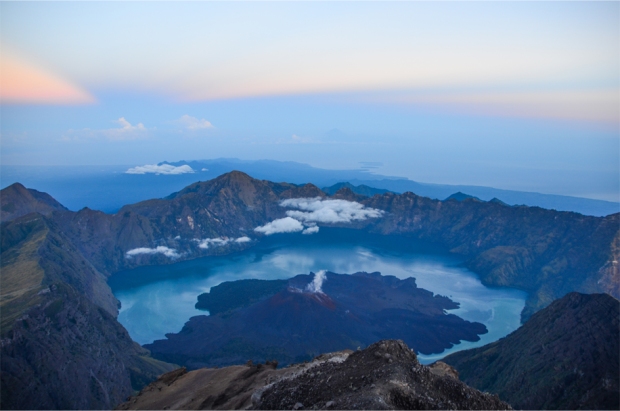



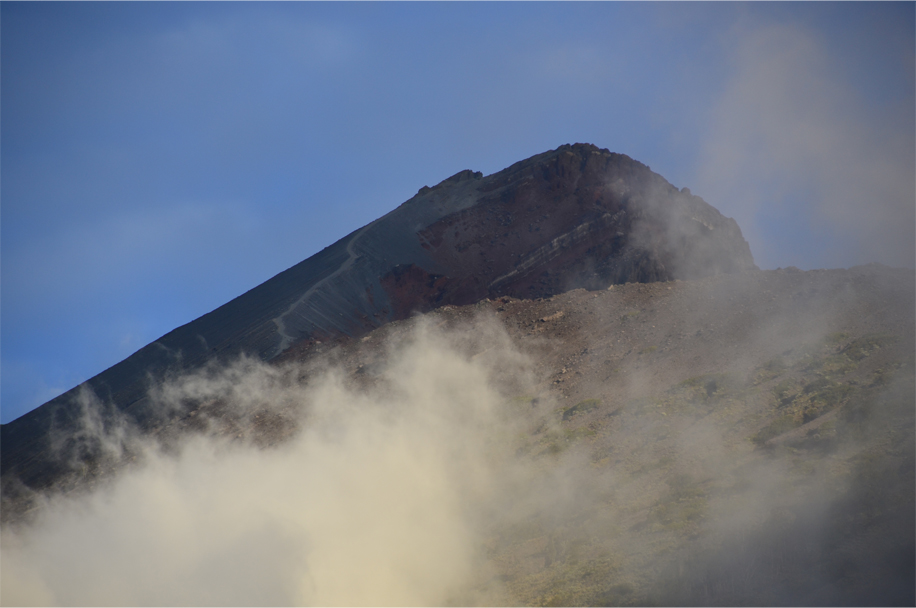
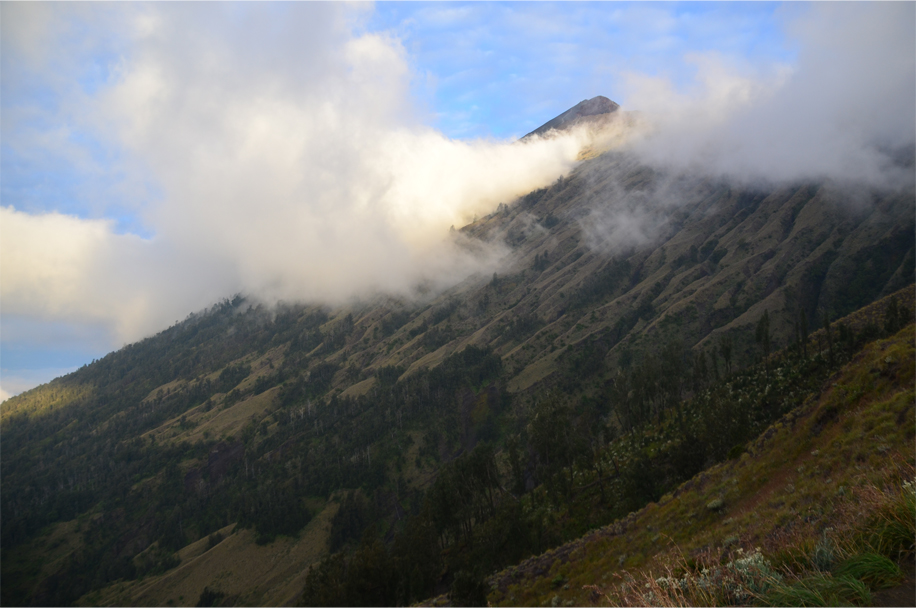
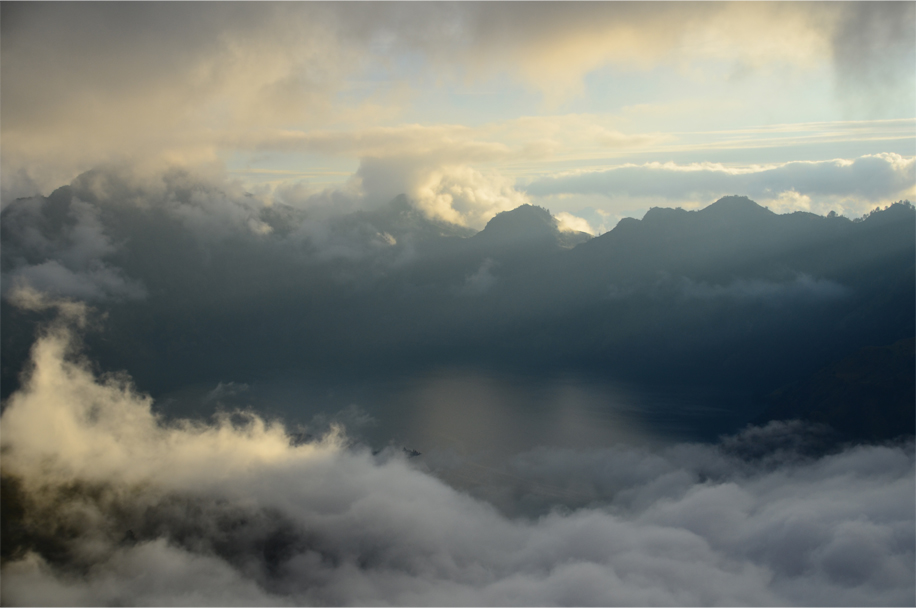

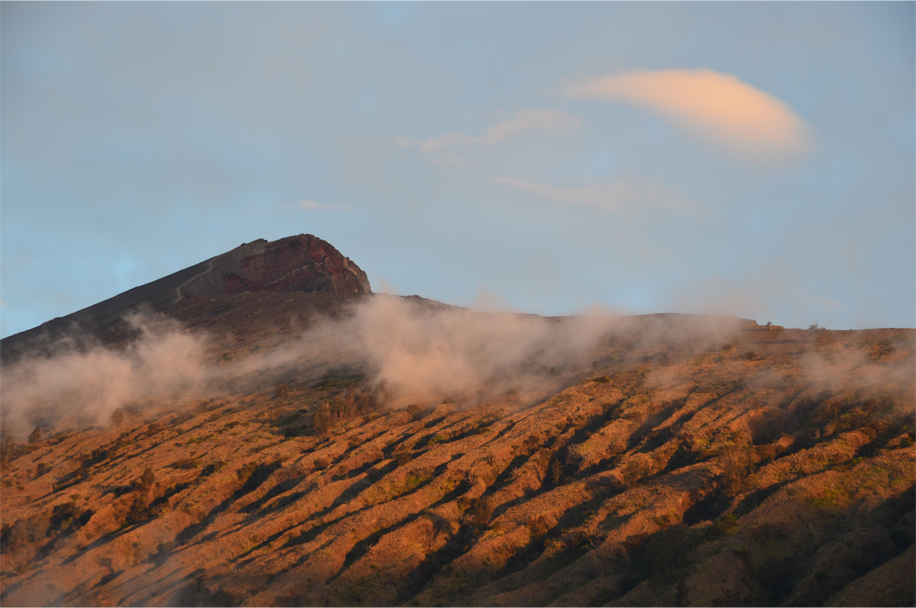


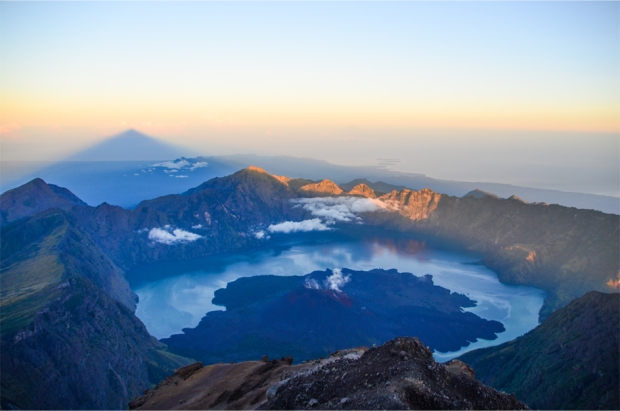

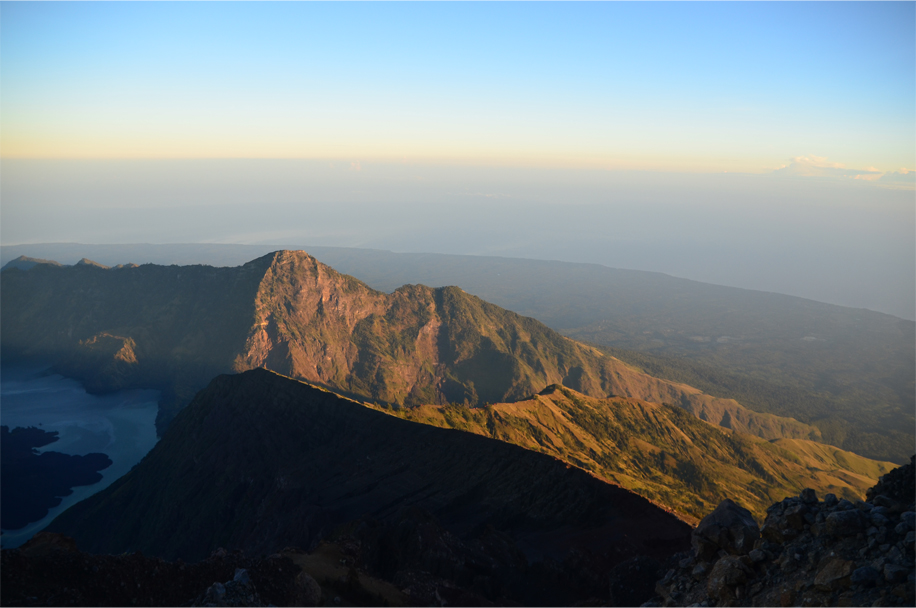



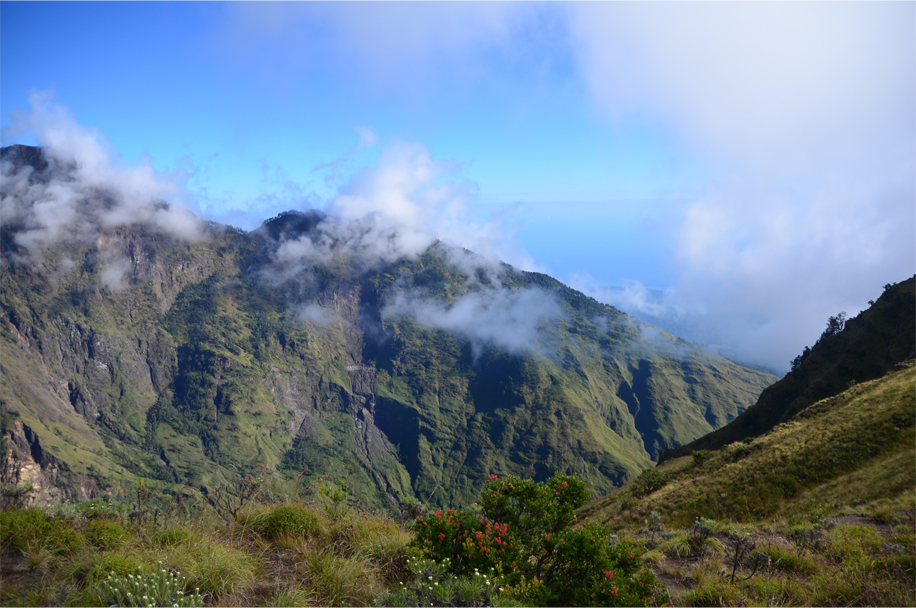

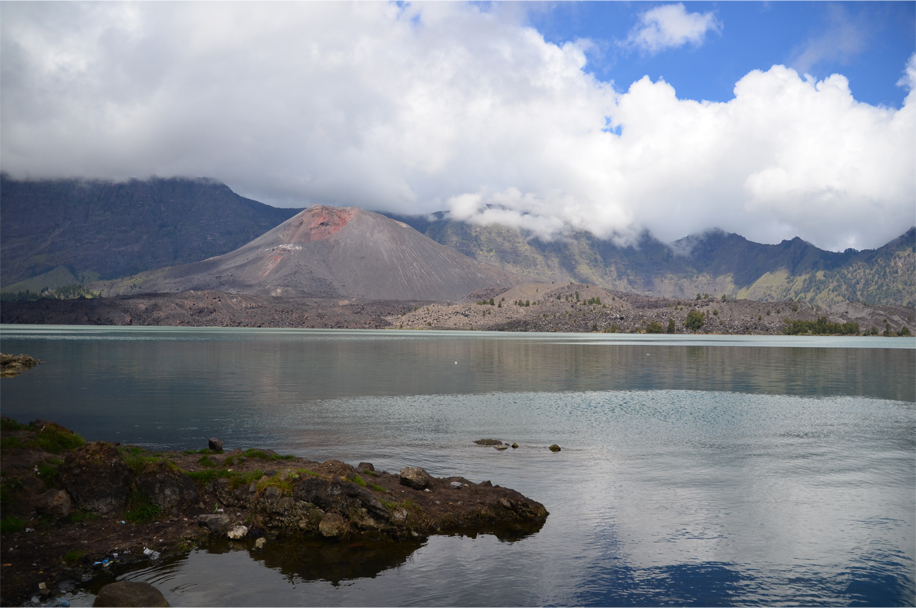
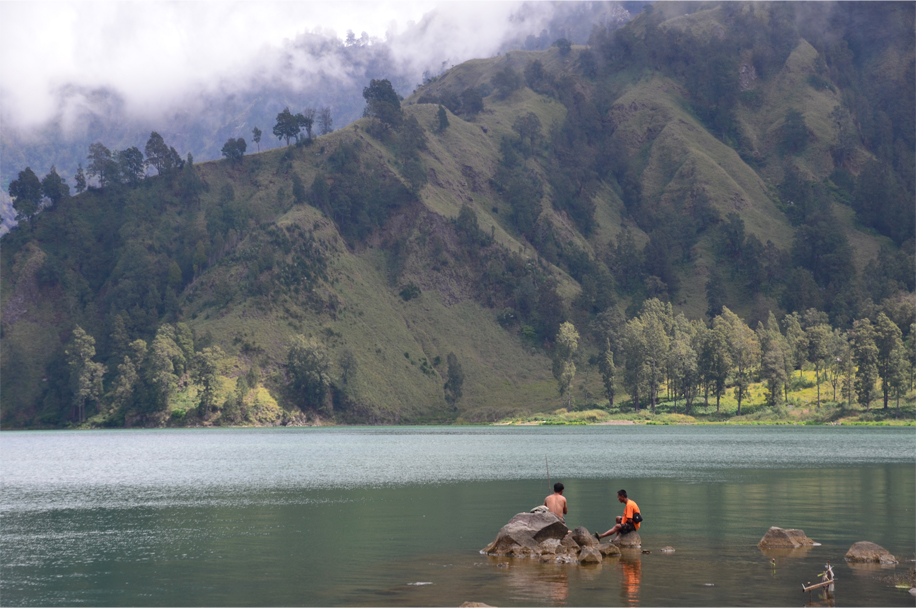
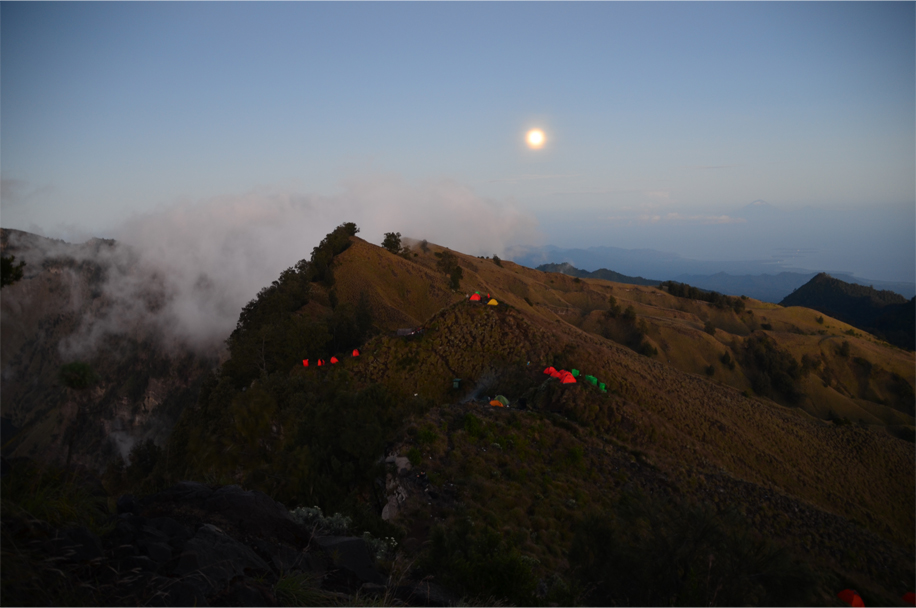
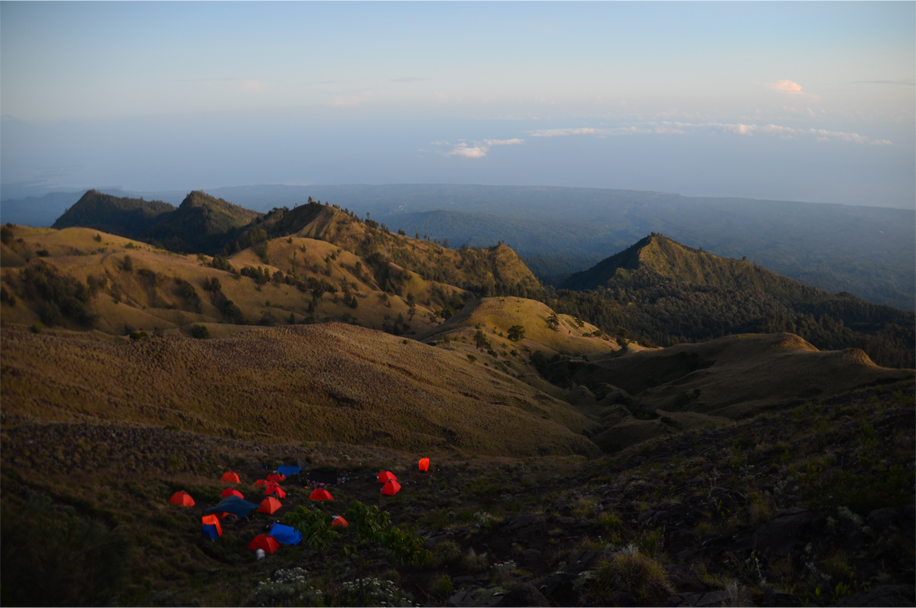
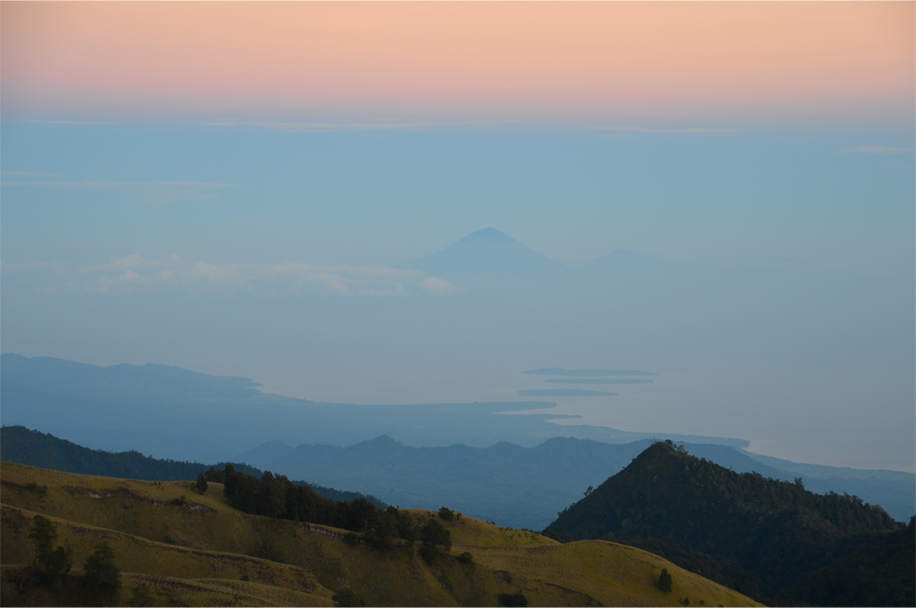


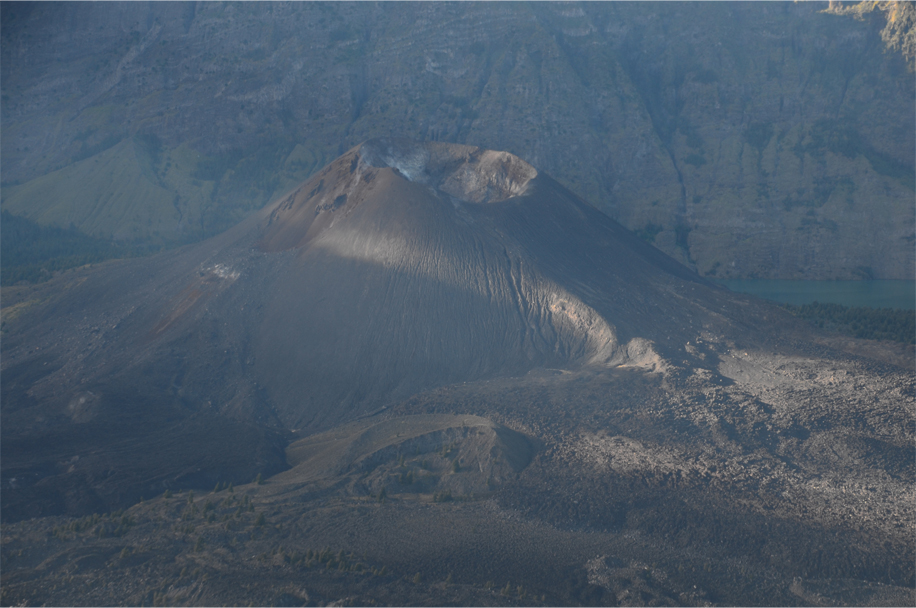
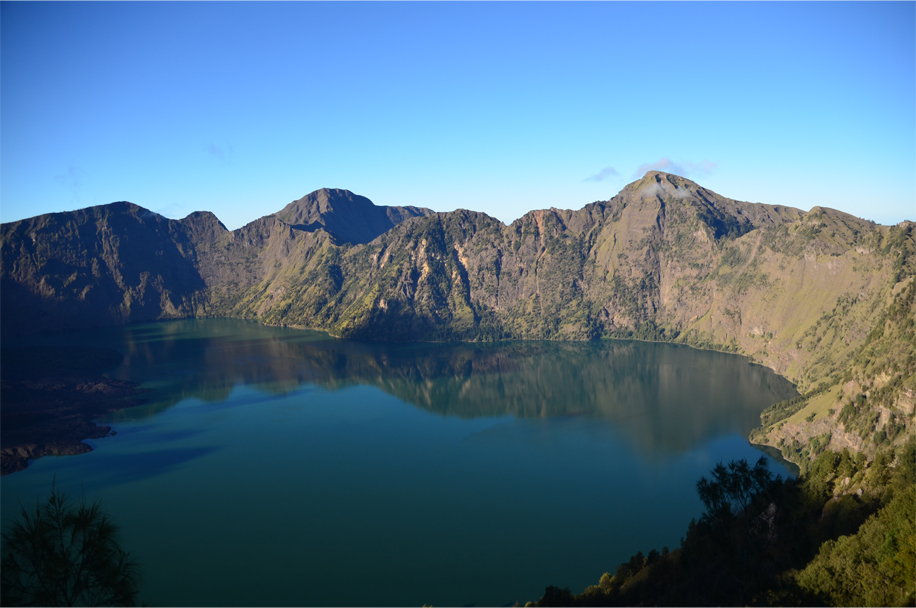


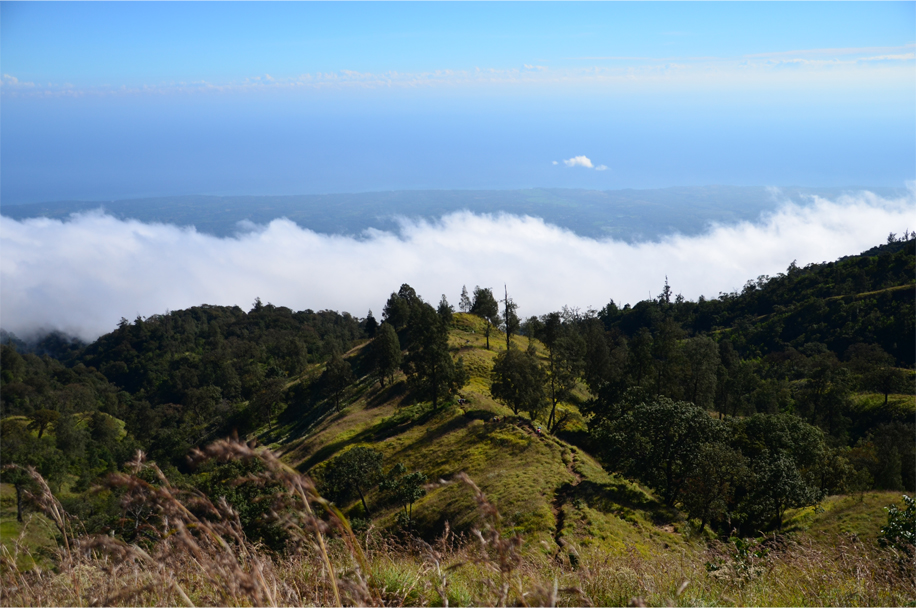
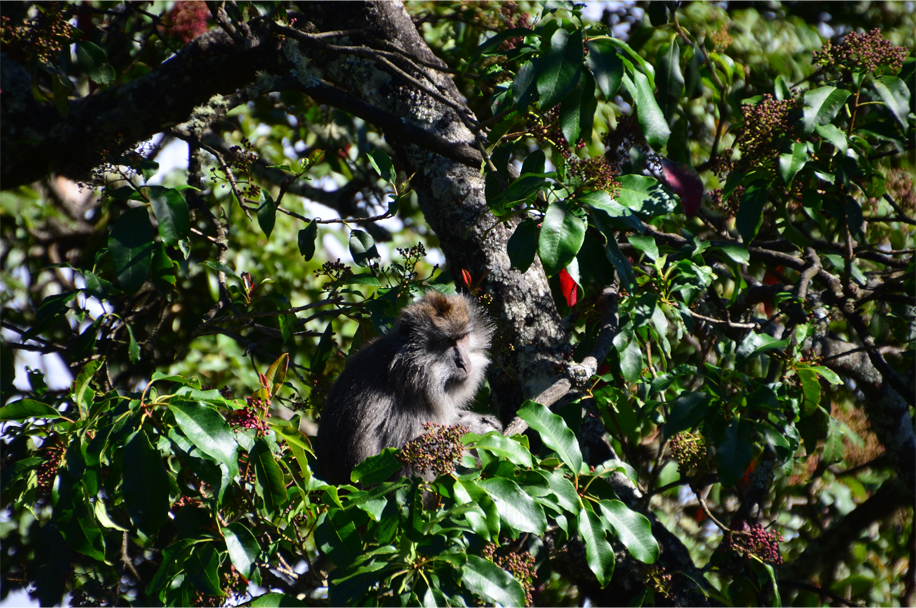




Stunning photos!
Thanks, Debra!
Thanks for sharing, James! I’m glad you made it to the top, as painful as it was. Going by the photos, it was well worth it! You’ve given me the idea of doing it myself, when I start my RTW trip. 🙂
You’re welcome, Stephen! Make sure you get plenty of practice before Rinjani – it’s a very demanding trek. The second day was a gruelling 12-15 hour course to the summit, back down again, to the lake and right back up the other side. I only just managed it by the skin of my teeth!
I’m intending to do the EBC trek before then. Nepal’s the first calling point. 🙂
Incredible story and pictures! I want to go!
You should, especially if you’re an avid hiker with a penchant for climbing mountains!
Definitely. Not many mountains like that where I’m from though.. One-way ticket to Indonesia, here I come!
Bravo you, James – what an achievement! And what a rich reward awaited you (and us, thank you 🙂 ) Terrific report and magnificent pictures. Just two questions: You said the mountain exploded in the 13th century, and that it’s still active – you mean it’s just puffed and steamed away gently for 600 odd years? And Ganung Baru, the new mountain, where is is growing from? I don’t mean to be picky – I have a real fascination with volcanos and can never get enough information about them! 🙂
Thank you, Meredith – I can say that the photos were worth every bit of pain!
I guess you could say Rinjani has been far less destructive since the big explosion. Gunung Baru grew from the same magma chamber that powered the old volcano – there have been more violent eruptions every now and again (involving lava and ash plumes) and the most recent one was back in 2010.
That year a new vent opened up on the side of the volcano (you can see it with the reddish tint in the photos) and lava flowed down into the crater lake. But thanks to its relatively small size and remoteness – being cocooned in the shell of the old mountain – the effect on the rest of Lombok is usually quite small. 🙂
Ah! I’ve a better sense of the geography now. It truly is a benevolent mountain – as long as that caldera wall holds, Gunung Baru (and by extension, the old mountain?) are relatively benign, emptying into the lake? I’ve stretched the photos to the extent of my 18″ screen – I’m looking forward to seeing them on my new Mac when I get back to Oz in September! Just stunning 🙂
“Benevolent mountain” – that’s a great description! Given its potential for activity, Gunung Baru is understandably off-limits to climbers, but the old mountain is as benign as they come. 🙂
Love this story of yours James! Did you know that Mount Agung, Semeru and Rinjani are the three most sacred peaks for the Balinese Hindus? Hence the offerings. I still remember when Jen suddenly stopped while we were going down to Senaru. I asked him if wild boars usually attack people. He said no, but once they choose to confront, they will fight to death. It was truly an experience of a lifetime James!
Ha, well maybe we should climb all the remaining two holy mountains! Just kidding, Bama… Rinjani left us completely broken, and I’m not sure about climbing a volcano as active as Semeru! Sadly I missed seeing the boar completely. Thanks for being my partner in pain for this one – climbing Rinjani was clearly the highlight of my year!
Awesome pictures, James!!! I think I felt just like you when we were climbing up glaciers in Norway. 🙂
Thanks, Suze!! Climbing glaciers in Norway? I think I would love to try that… sounds like a lot of fun. 😛
Oh my god, I was dying. 😀 I slept like a baby that night though. 😉 I’ll be posting the pictures later this week.
In June, I went on a short hike in Mussoorie, India – that was enough to give me cramps. How I envy you guys who truly explore places that few visit – needless to say the photographic fruits of your labor are stunning.
Thanks for the kind words, Vibha. I’m thrilled at how the photos turned out – the conditions on the mountain couldn’t have been any better!
Breathtaking photos! I love every one of them, from the culture to the colors! I loved this post…I will definitely be back for more! 🙂
I’m glad you enjoyed the pictures. 🙂
What a fabulous adventure, and so well told. I love your writing. Kudos for completing such a gruelling, though no doubt exhilarating, trek. Our trek up the volcano on Bali for sunrise pales in comparison, but we were still thrilled with the experience and our accomplishment.
Thanks very much, Alison! It may have been one of the hardest things I’ve ever done but I don’t regret a single moment of it. Haven’t yet made it to Bali but more volcano trekking could be in the pipeline. I’ll have to read through your post on the climb. 🙂
Here’s the link
http://alisonanddon.wordpress.com/2012/04/26/bali-part-4/
Forgot to say – fabulous photos.
Your gorgeous writing is only matched by your photography. So glad I found your blog!
It’s my pleasure – thank you for the comment!
Must have been a very interesting hike.
Ah, Bente, I think you would have loved it! Being surrounded by nature and having so many wonderful photo opportunities. There was even edelweiss on the mountain.
Wow, those pictures are amazing!!! What an accomplishment, congratulations!
Thank you Stephanie, Rinjani was one of the most incredible places I’ve ever experienced. It wasn’t hard to snag a good photo with so much natural beauty around!
Love the photos! And what a peaceful yet exhilarating place. Very cool.
It was a great place to get away from it all for a few days… living simply, being in nature and blissfully forgetting about phone calls and emails.
Sounds perfect!
Exhilarating, even from the confines of my armchair James!!! Can well imagine the pain and the ultimate joy of conquering that summit! Thank you for another fabulous post 🙂
You’re more than welcome, Madhu! I often felt as though it was less to do with conquering the mountain and more about conquering myself – pushing past known limits (and thresholds of pain!). I have a feeling there may be more mountain climbs in the future… 🙂
I am sure there will be James! This would have inspired me to put on my hiking boots if I had been younger and fitter 🙂
These photos are RIDICULOUS (in a good way). It looks like you’re hiking through a scene from Lord of the Rings. I’m glad you took so many gorgeous pictures, because I would never EVER be able to survive that hike or see it all in person. I’ll have to wait for them to build the chair lift that takes tourists to the top. (Haha….just kidding. I know you hate those.) 😛 And it isn’t really all about the view anyways–it’s more about the strenuous journey to reach the top.
Haha, nice one about the chair lift, Rachel! 😛 I think I would have taken more photos if it wasn’t so difficult… I had to keep my eyes constantly on the trail (did not want to risk falling!) so the camera spent most of its time bundled up in my backpack. And you’re right, as painful as it was, the journey to get up there and come back down again was totally worthwhile.
wow, great picture :0
Makasih. 🙂
Thanks for doing the hard word for me – now I know what it looks like from the summit! My wife and I hiked to the crater and slept overnight (during one of the more memorable thunder storms in memory). It was quite a spectacular view, as you’ve well captured here. Any chance you saw some guides wearing some swell-looking hiking boots? We accidentally left ours in the back of the tour company’s car…
That sounds incredible – but then again I wouldn’t want to be in such an exposed location during a thunderstorm! Hard to say as the guides I saw all seemed to be fitted out with a proper pair of hiking shoes… none of them seemed super swell though!
Flip flops were pretty much the standard issue footwear for guides when we were there – business must be good!
Hello James! Stumbled across your blog, now I’m visually feasting. You know, Indonesia is my dream destination, well from Sumatra to Java to the Moluccas up to Irian Jaya. Been looking for Indonesian blogs long before, until today, ‘coz I’m so interested with the culture and landscape of your archipelago. Good day! Looking forward to meeting you someday there!! 😀
Kumusta Edmar! I’m not actually Indonesian but I appreciate being mistaken for one – my best friend is born and raised though, and his blog can be found at http://harindabama.com
Indonesia is a dream destination for me as well, I try to “go back” once a year and visit different islands when I can. The sheer diversity of the archipelago is simply mind-boggling, and you’d need an entire lifetime – if not more – to explore it from end to end!
So far I’ve not yet had the chance to visit the Philippines, which is a shame considering it’s little more than an hour’s flight from where I live (Hong Kong). Someday soon I hope! And salamat for the comment. 😀
Urghh! Mistake on my end. And yes, I saw that blog before I landed here, then mistakenly tagged you as Indonesian because of that! LOLS! 😀 Should have read the About page first.
wow these pictures are beautiful! especially the “The view from Senaru Rim” one. You are sooooo talented!
Thank you for the kind words! I guess you could say I was in the right place at the right time.
Earth is truly beautiful- I’m hooked to your site, keep on posting! (:
Appreciate it! 🙂
The most beautiful part of my trip in Indonesia… Thank you for this memories james
It’s my pleasure – Rinjani is such a singular, special mountain. I wouldn’t mind going back again!
Looks amazing! Love the sunset photos!
Rinjani was one of the most beautiful places I’ve ever been… the views are well worth all the pain!
awesome photos! it’s was a great post that you provide us. thanks for share your experience, especially that about Mount Rinjani as im from Lombok and live just near from the mountain.
Good Job 🙂
Terima kasih! How lucky you are to live on such a beautiful island – I really loved my time in Lombok. 🙂
Thanks for the detailed description of your climb to Rinjani. I am thinking of doing it. Can you please give me the number to your tour guide Jen. Also what kind of exercise would you recommend to do Rinjani?
Hi Sharmin, I don’t have Jen’s number but we booked our Rinjani climb through the local outfitter Rudy Trekker (https://www.rudytrekker.com/). In terms of exercise, you want to build stamina and endurance in your legs and core especially. Hope that helps!
I had to come and check it out after your comments on my post. What an incredible adventure and stunning scenery. This sounds super difficult but oh so rewarding. I couldn’t agree with your guide more about the importance of mental preparedness. Experiences like this test us in so many ways and teach us about the power of nature. Kudus to you guys for persevering.
Oh, it was painful, especially the laborious trek between the two campsites after the summit attempt! And the trip was a real dive into the deep end for Bama, who previously had no real hiking experience before Rinjani. But the tables have turned now. He’s much fitter than I am these days, and he tackled our next volcano hike (in Central Java’s Dieng Highlands) with the ease of a mountain goat!
Oh my god james This is me jen, I just read some article about mount rinjani and I find you, hai I’m still guiding now on rinjani 💪
Hi james this is me jen, oh my god good to see you here, and I fell amaze to look my picture, hopefully can see you again big brother
Wow, Jen – how wonderful to hear from you after all this time! I’m also amazed that you found my blog. Hope you’re doing well and business these days is getting better and better. I will contact you for sure if I come back to Rinjani for another trek. Take care!